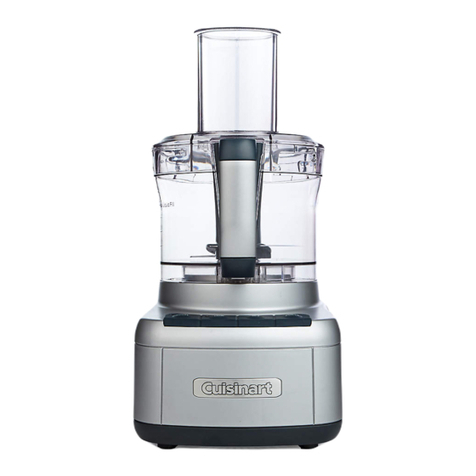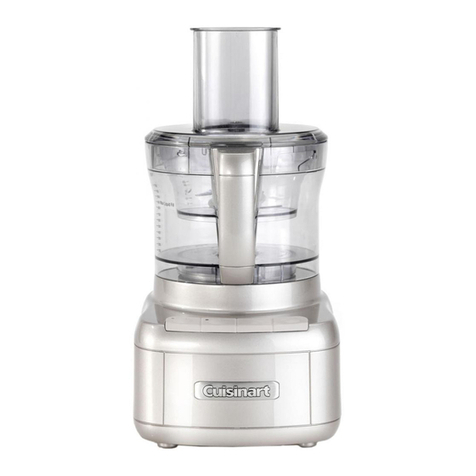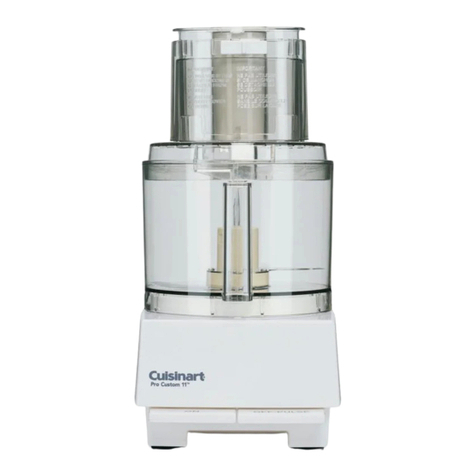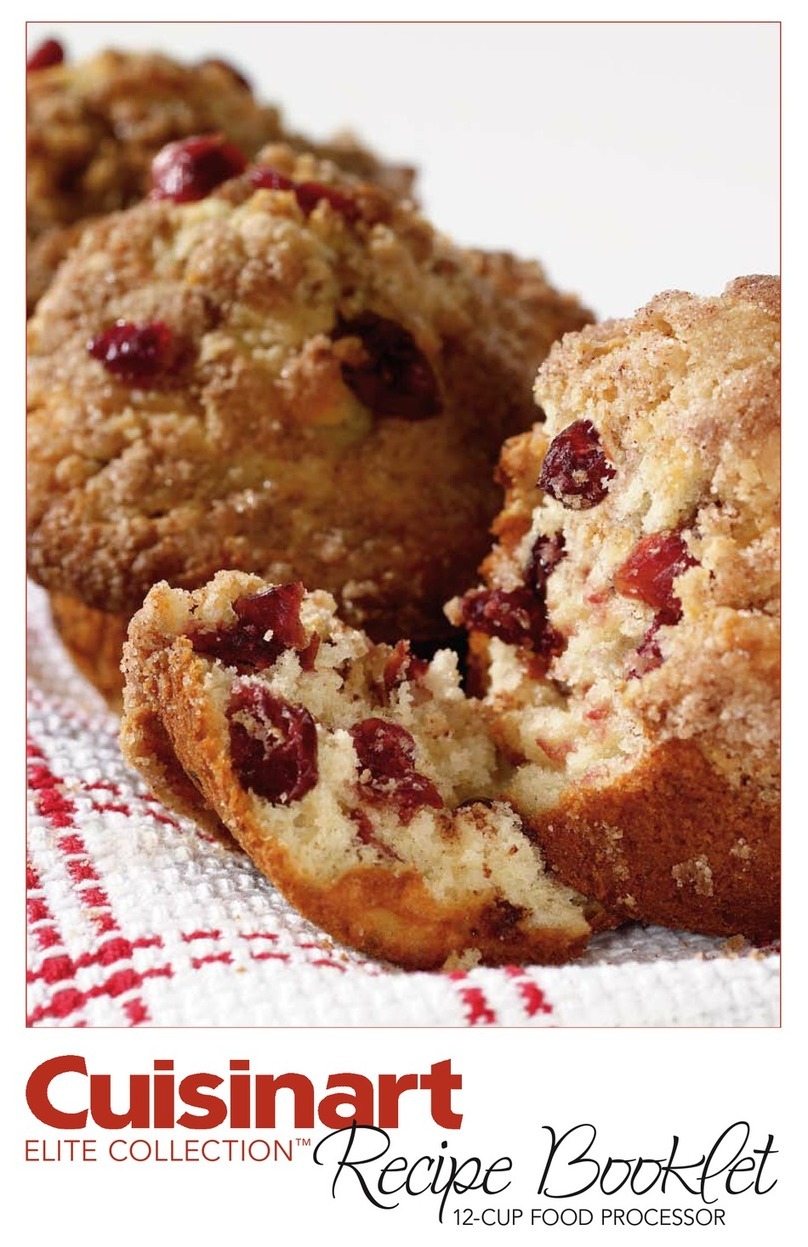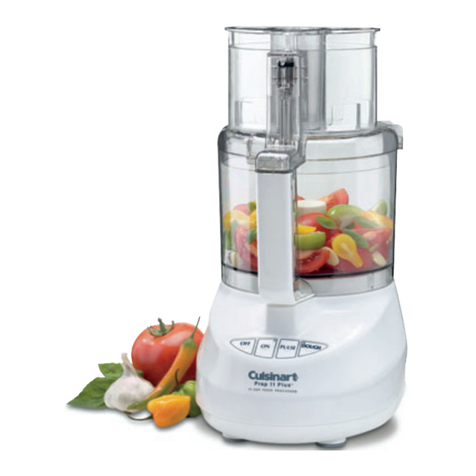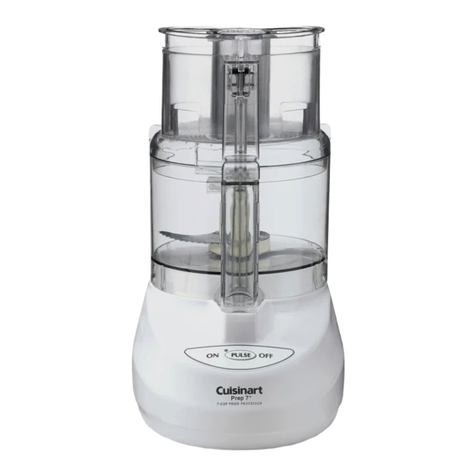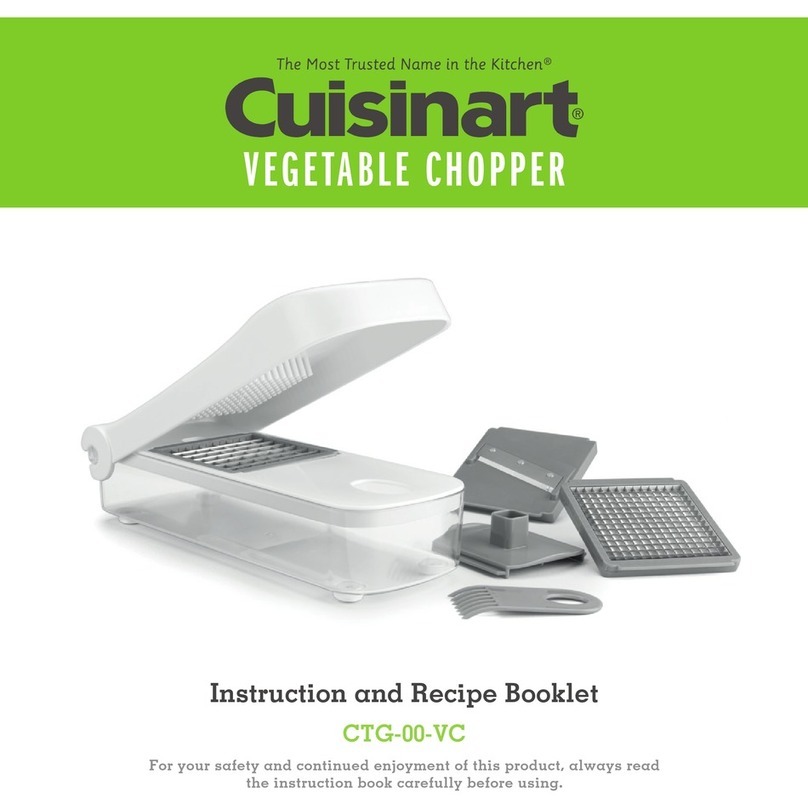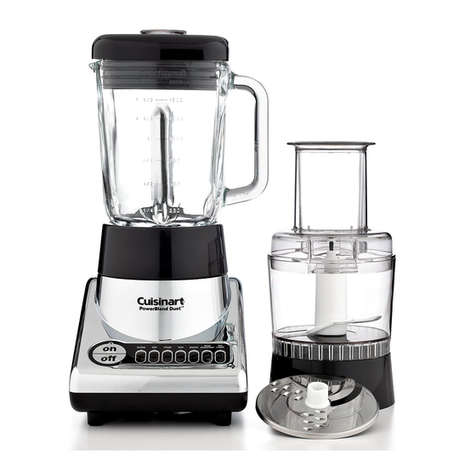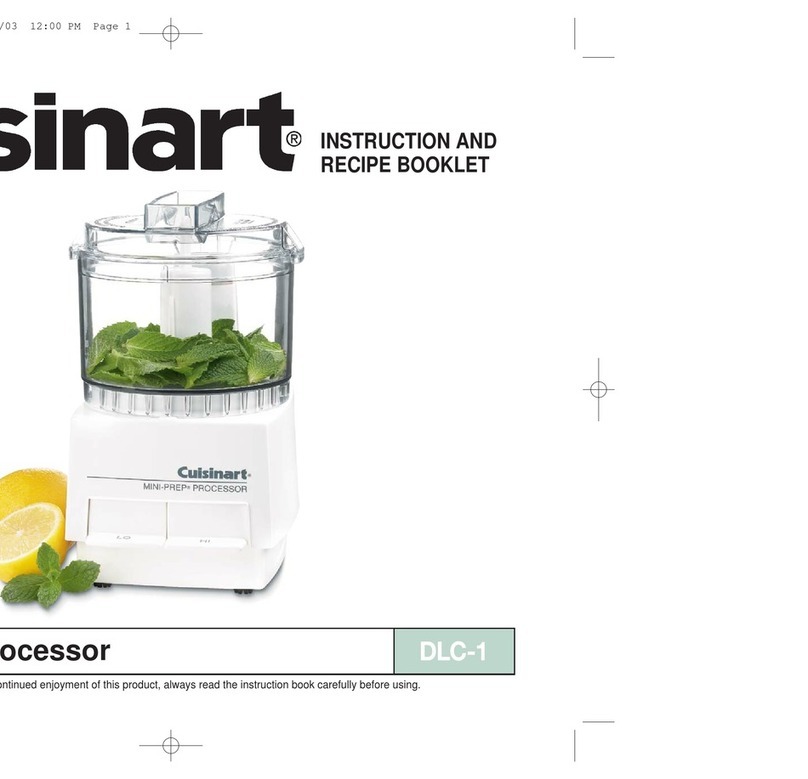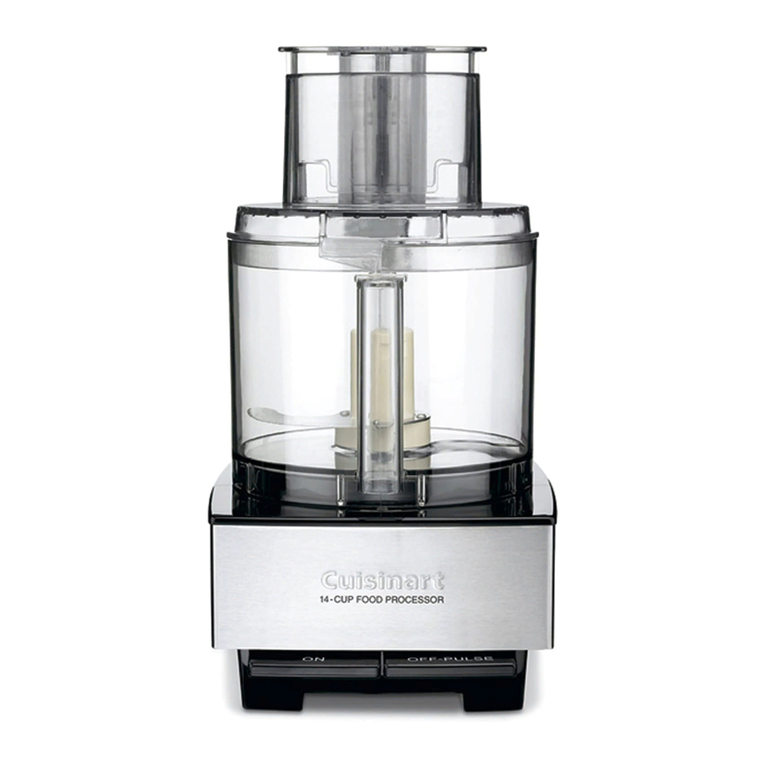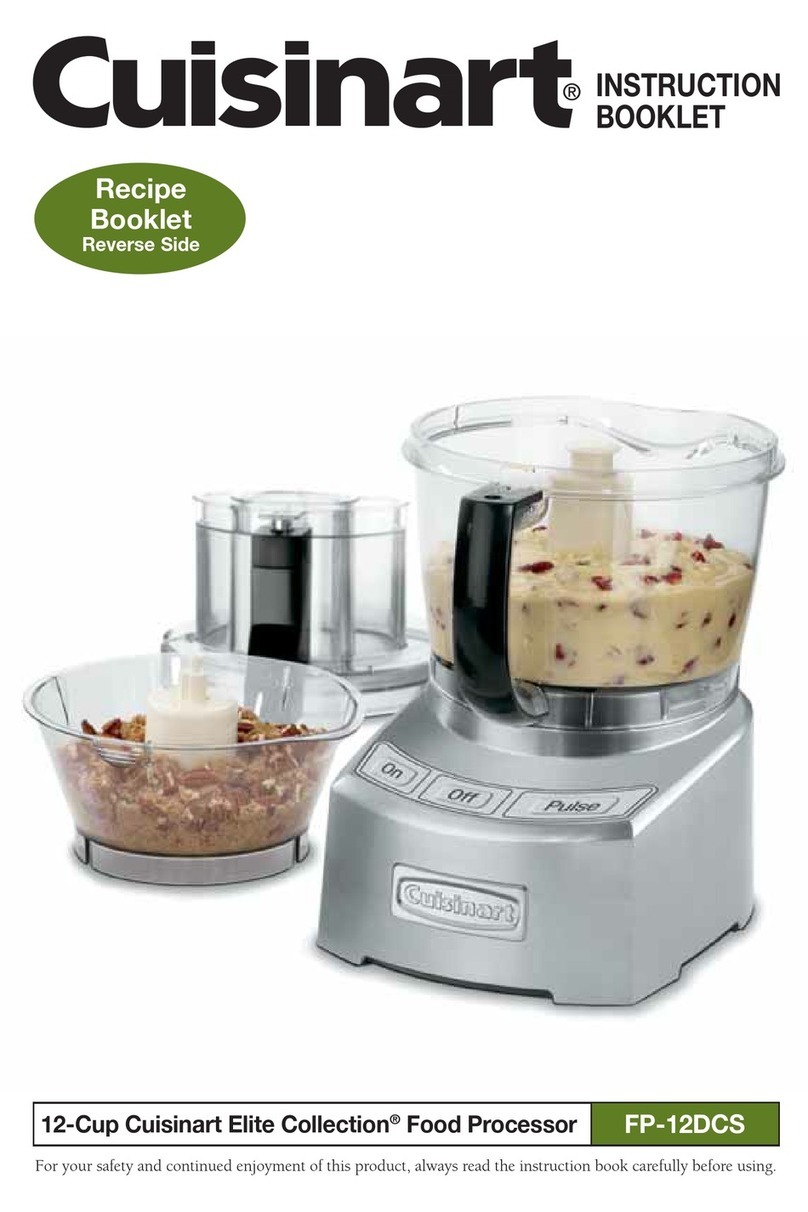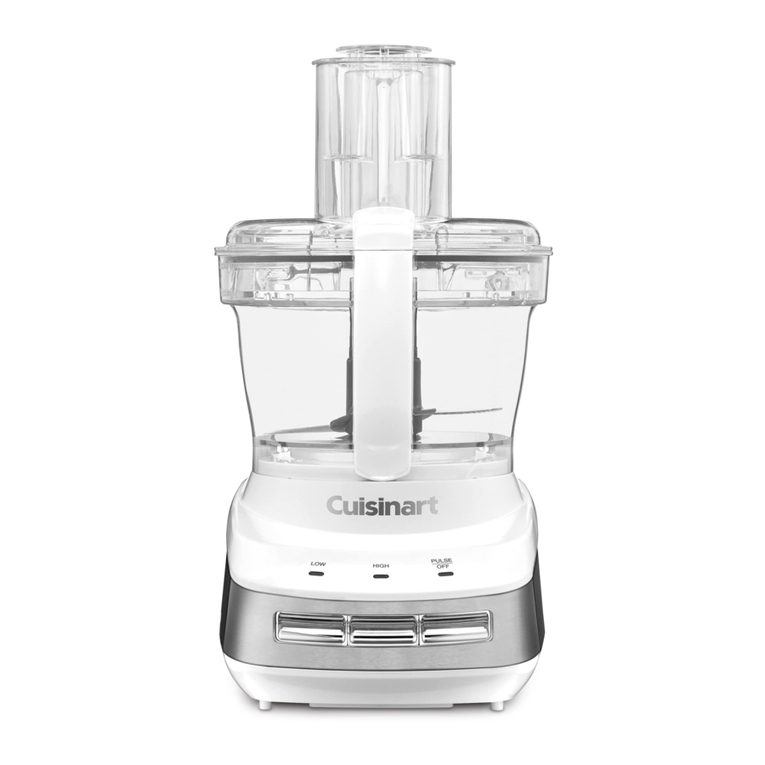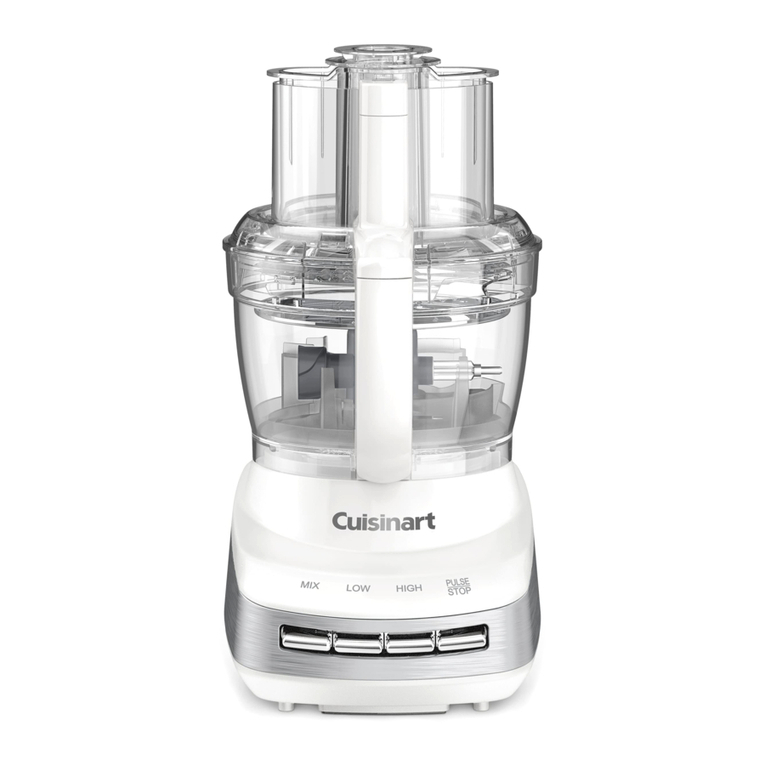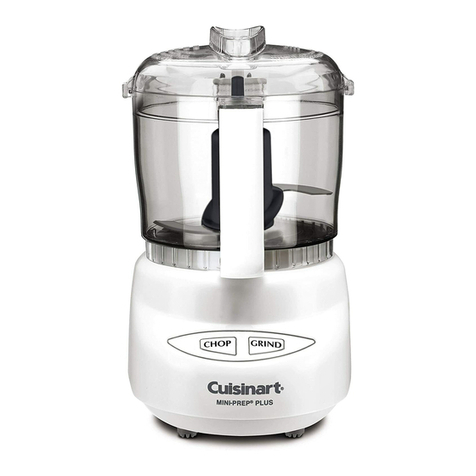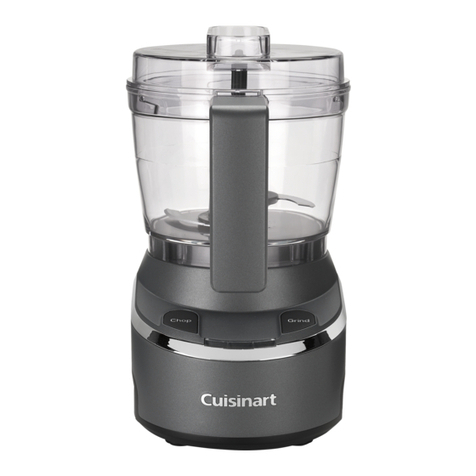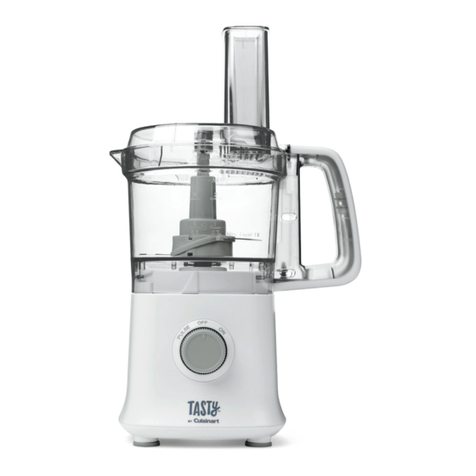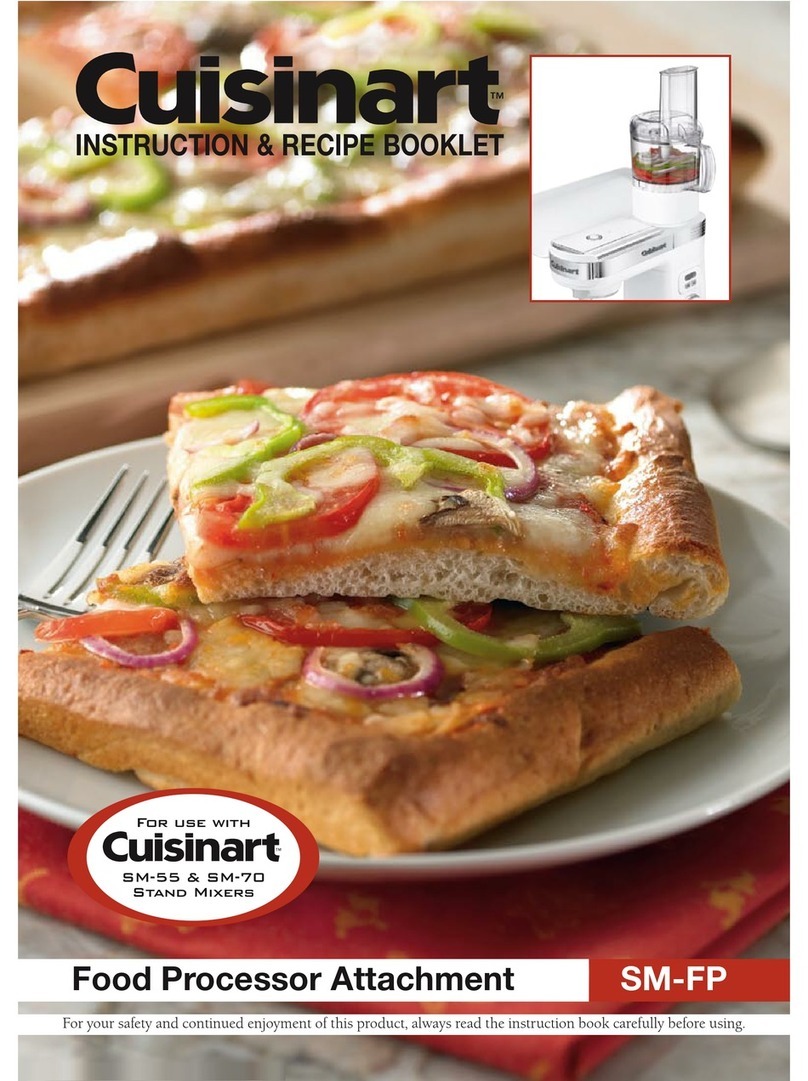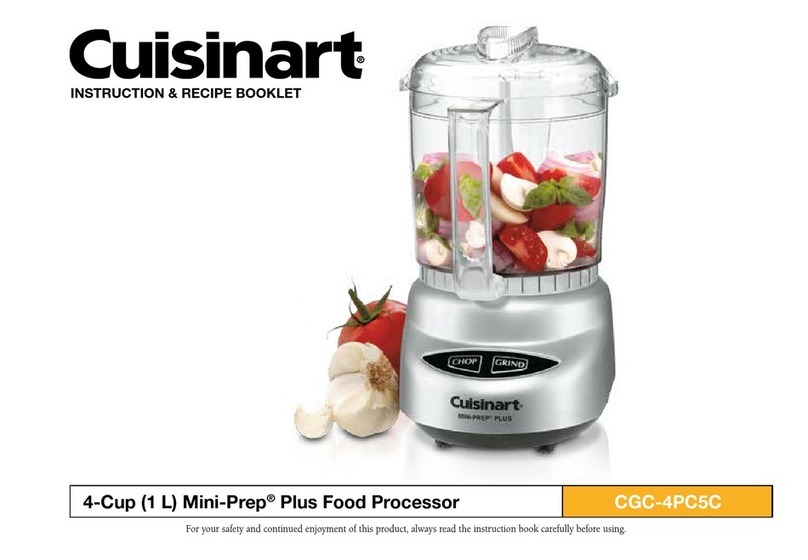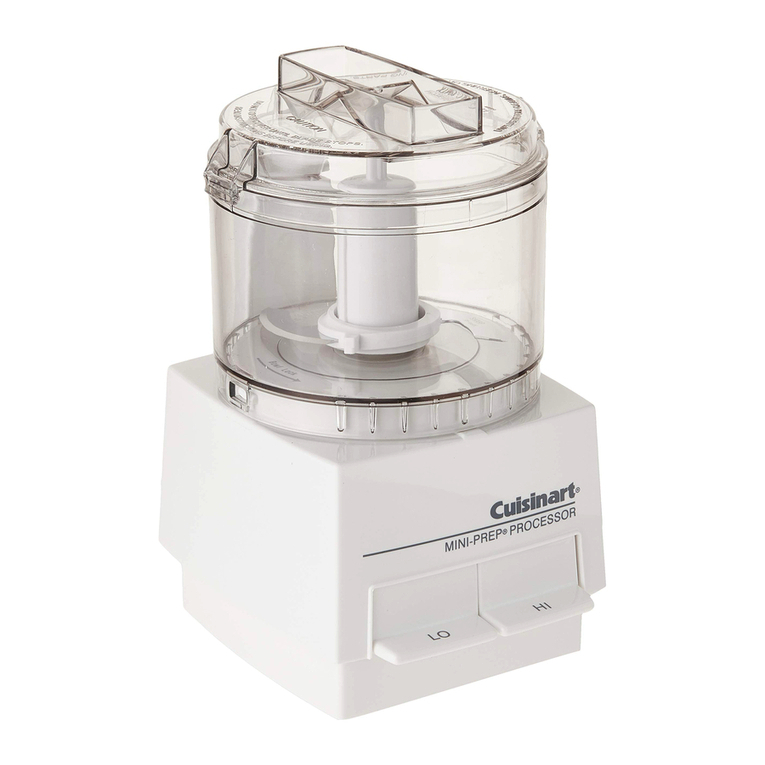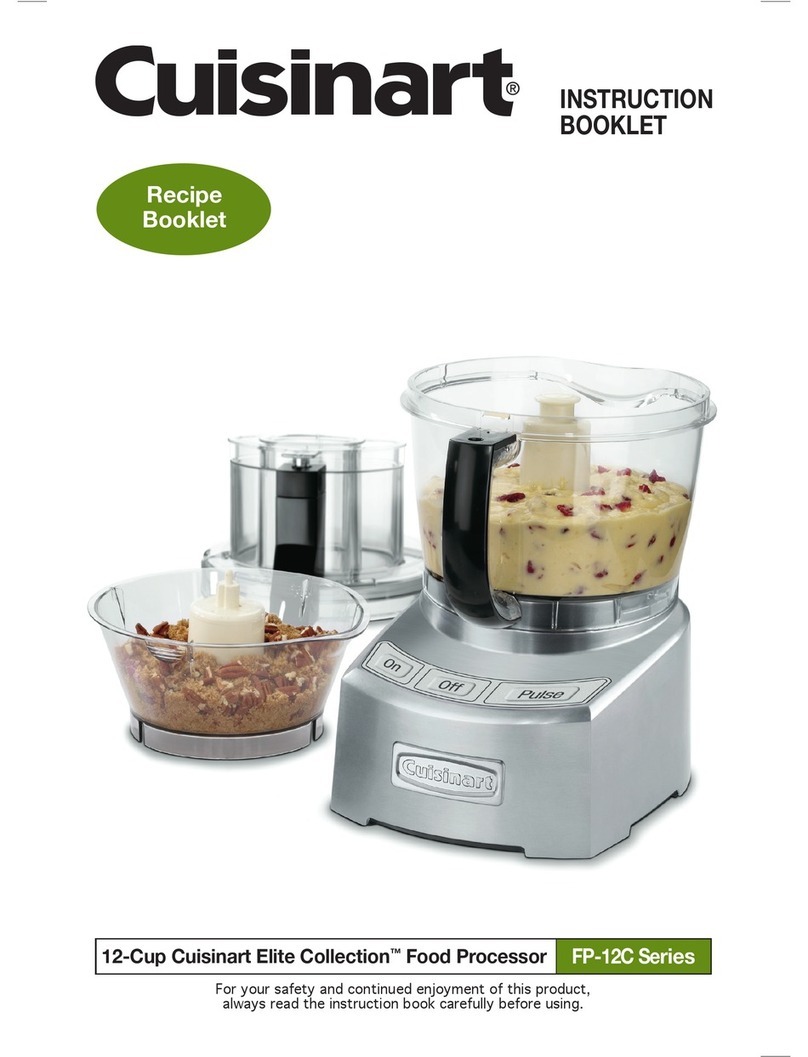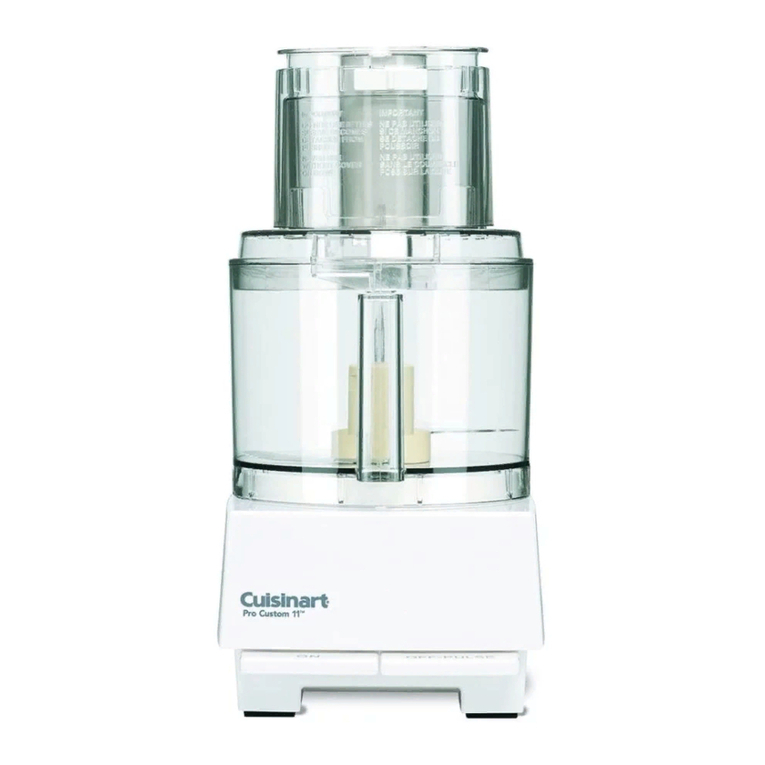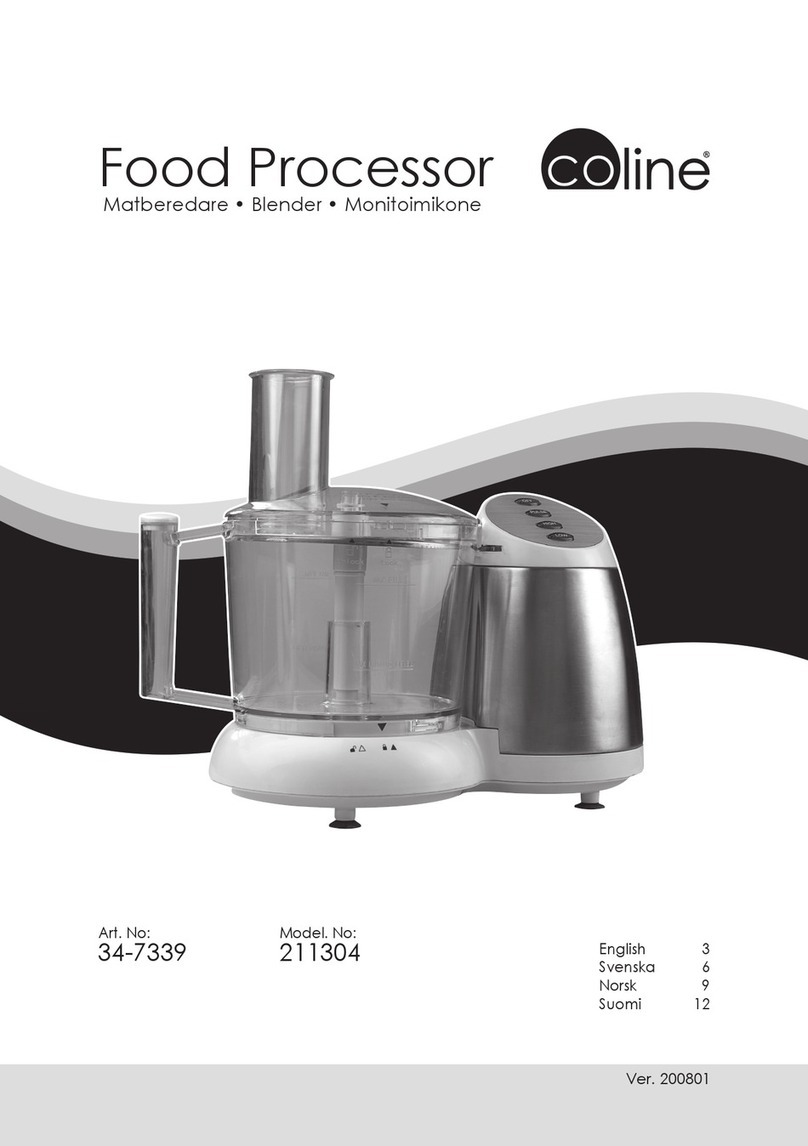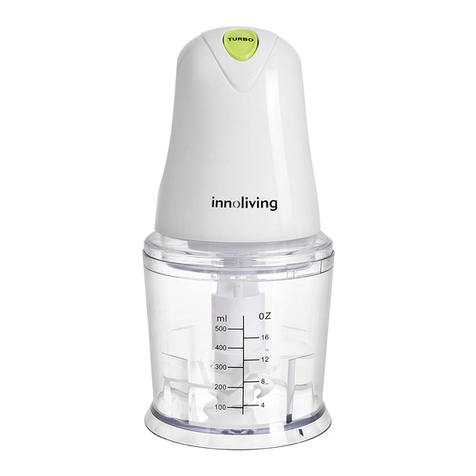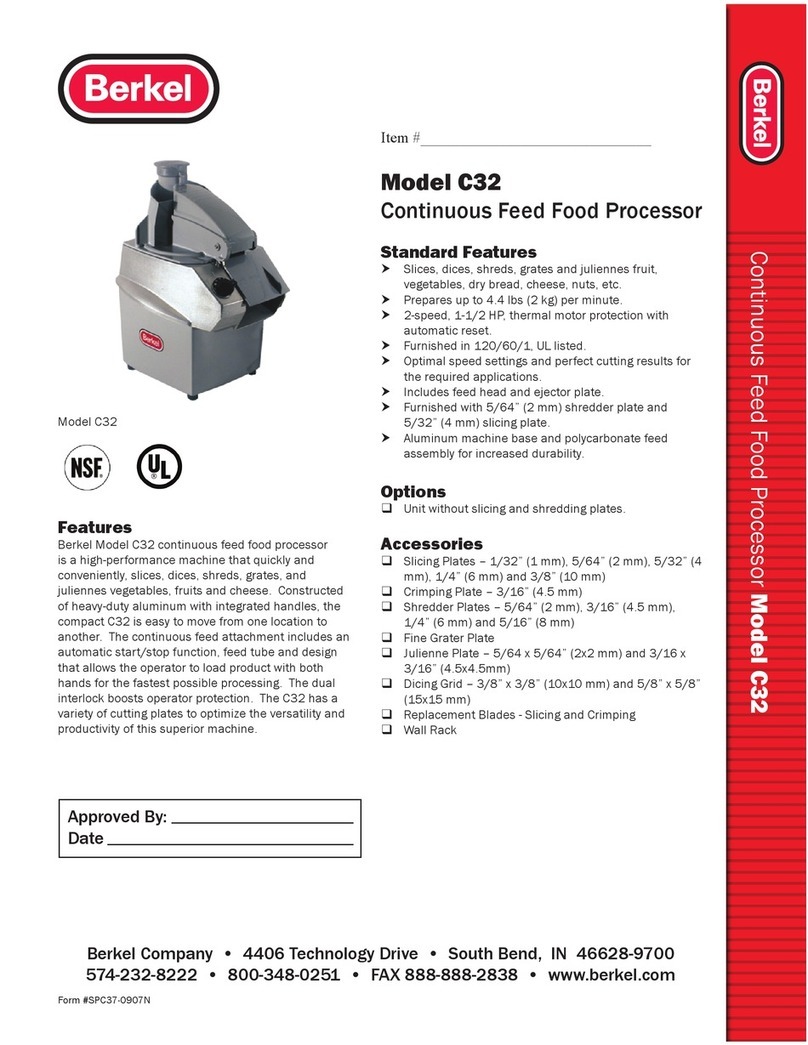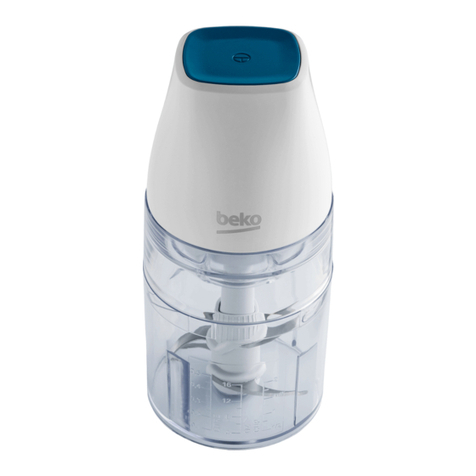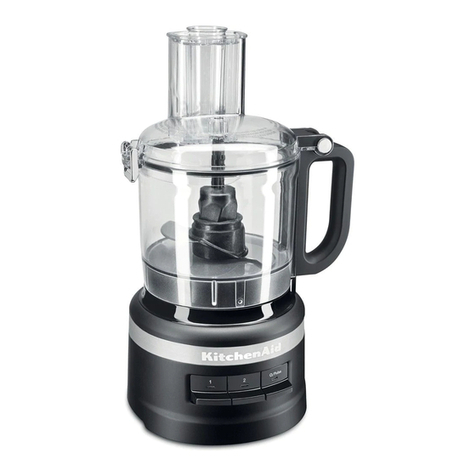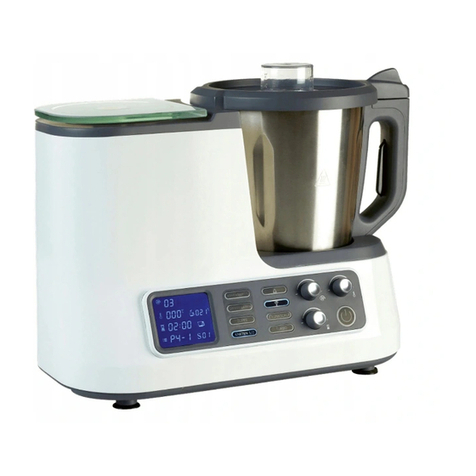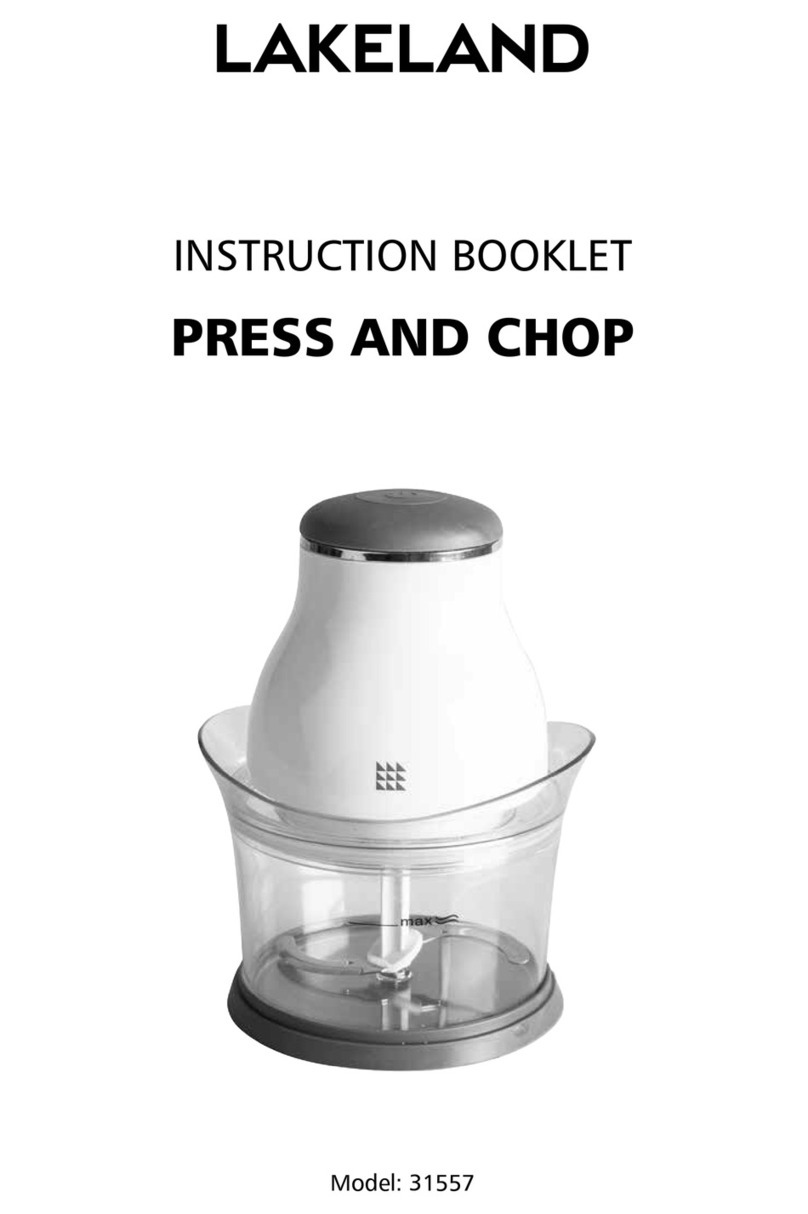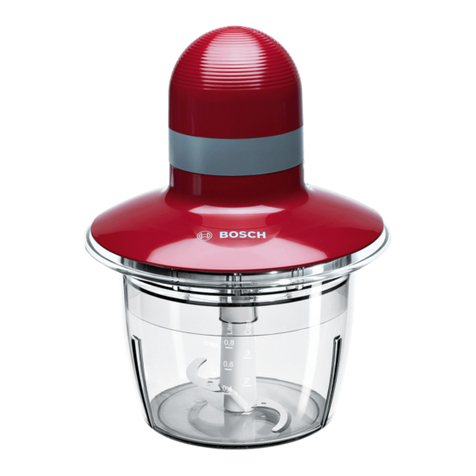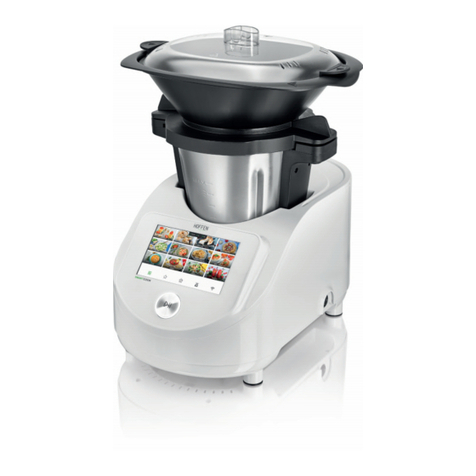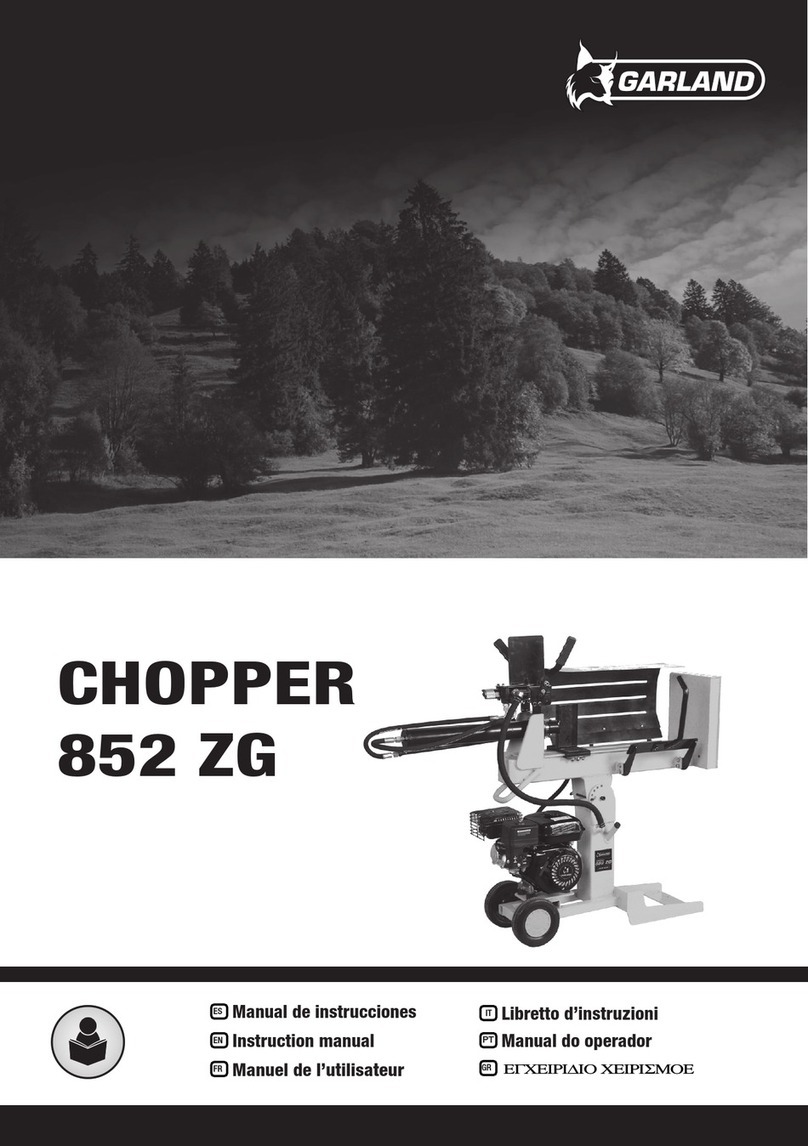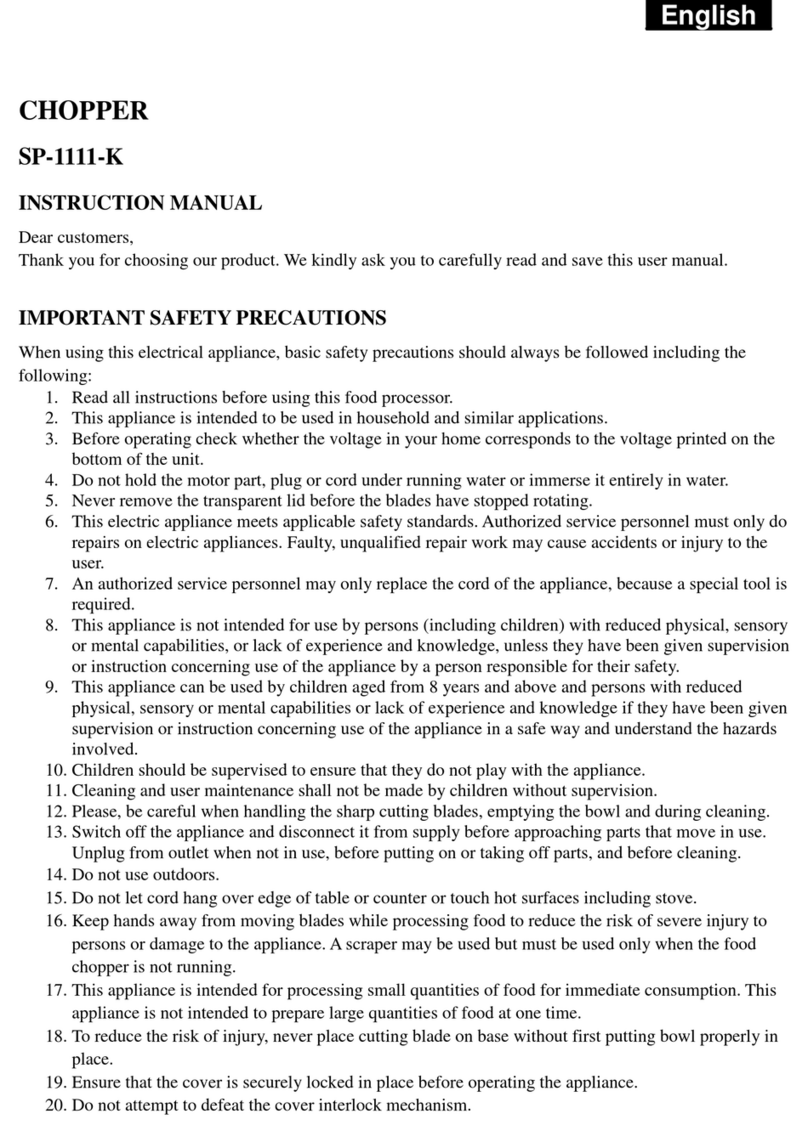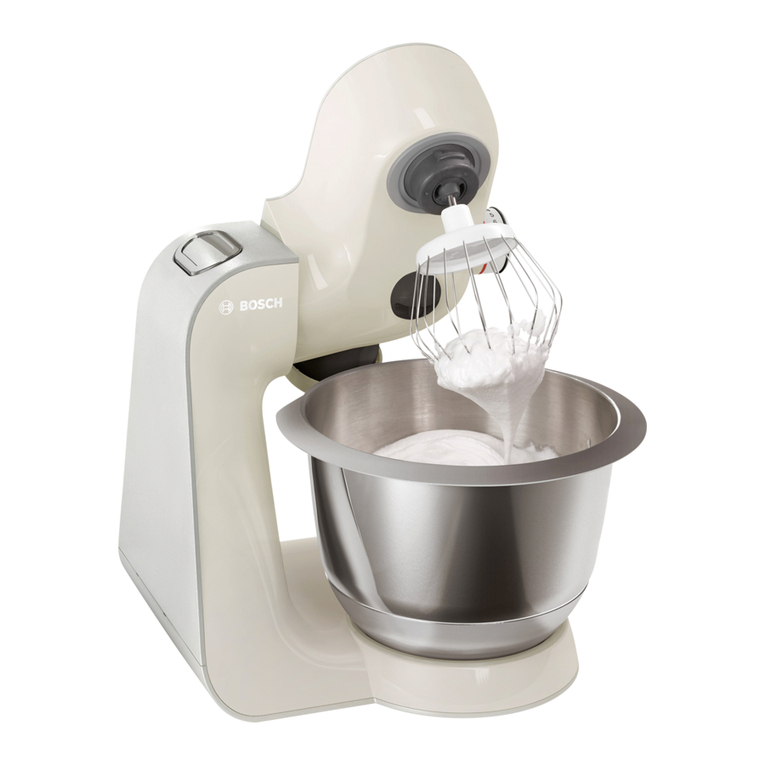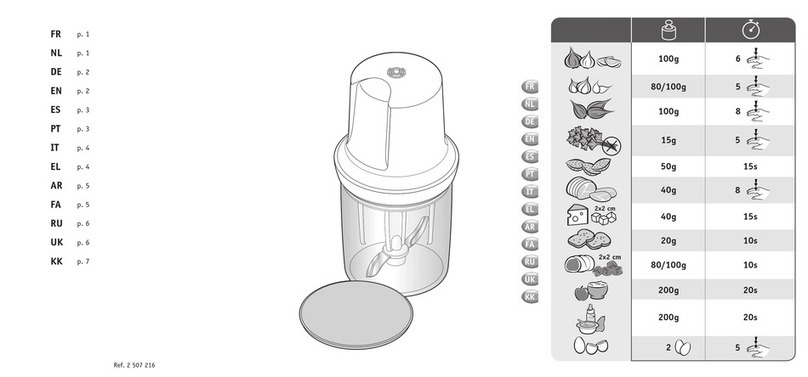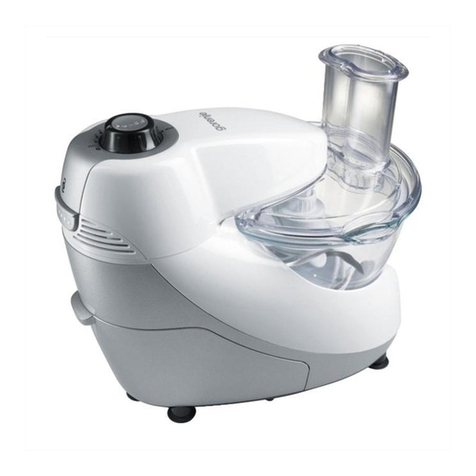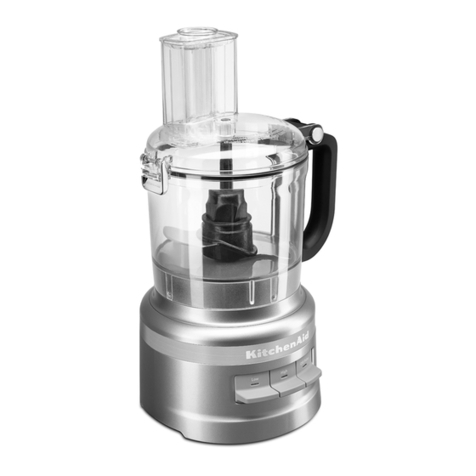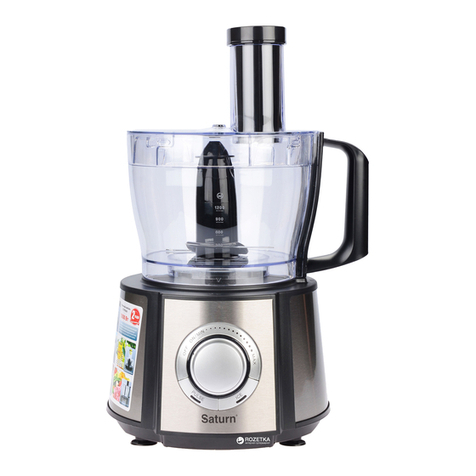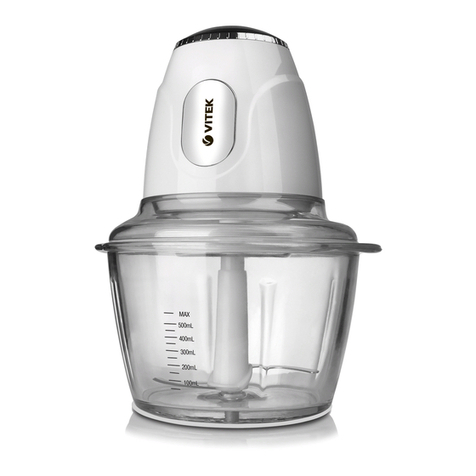9
from cooking liquid with a slotted spoon;
they will purée faster and smoother without
liquid. Then add just enough liquid to make
the purée pourable, return to the soup
liquid, and stir to combine.
To dislodge food
Occasionally, a piece of food may become
wedged between the blade and the work
bowl. If this happens, unplug the machine,
remove the cover, lift the blade out carefully
and remove the wedged piece. Empty the
bowl, reinsert the blade and lock the cover
and pusher into place. Press the ON button
and drop the food pieces through the small
feed tube opening while the machine is
running. After adding a cupful this way, add
the remaining food to the bowl and process
in the usual manner.
To chop hard foods
To chop hard foods like garlic and hard
cheese, assemble the unit, remove the
small pusher, press the ON button and drop
the food through the small feed tube while
the machine is running.
Small foods like garlic can be dropped
in whole. Large foods like hard cheese
should be cut into 1-inch (2.5 cm) pieces.
This method of processing minces garlic,
shallots and onions. Hard cheese and
coconut will have the same texture they
would have if hand grated.
IMPORTANT: Never try to process cheese
that is too hard to cut with a knife. You
may damage the blade or the machine.
To chop parsley and other fresh herbs
The herbs, the work bowl and the metal
chopping blade must all be thoroughly
clean and dry. Remove stems from herbs.
Add leaves to bowl and process, using
the PULSE button until chopped as fine as
desired. The more herbs you chop at a time,
the finer chop you can obtain. If completely
dry when chopped, parsley and other herbs
will keep for at least 4–5 days, stored in an
airtight bag in the refrigerator. They may
be frozen for months, stored in an airtight
container or bag.
To chop peel from citrus fruit or to chop
sticky fruit like dates or raisins
For citrus, remove only the peel with a
vegetable peeler, not the white pith, which
is bitter tasting.
Cut the peel into lengths of 2 inches (5 cm)
or less and process with a small amount
of sugar or salt from the recipe until finely
chopped. This may take 2 minutes or
longer.
For sticky fruit like dates, raisins, prunes
and candied fruit, first freeze the fruit for
about 10 minutes. Add some of the flour
called for in the recipe to the fruit. Use no
more than 1 cup (237g) of flour for each cup
of fruit.
To chop meat, poultry, fish and seafood
The food should be very cold, but not
frozen. Cut it into 1-inch (2.5 cm) pieces to
ensure an even chop. Using the ON button,
process no more than the recommended
amount at one time (see table, inside front
cover). Press the PULSE button 3 or 4
times at a rate of 1 second on, 1 second
off. If the food is not chopped fine enough,
let the processor run continuously for a
few seconds. Check the texture often to
avoid overprocessing. Use a spatula to
scrape food from the sides of the bowl as
necessary.
To purée meat, poultry, fish
and seafood
Prepare the food as described in the previous
paragraph. Press the PULSE button until
evenly chopped, then process continuously
to the desired texture. Scrape the bowl with a
spatula as needed.
Leave the purée in the work bowl and add
eggs, cream and seasonings as called
for by the recipe. Process to combine
thoroughly.
Remember, you control texture by the
length of time you process. By varying the
processing time, you can get a range of
textures suitable for hamburgers, hash,
stuffed peppers, or smooth mousses.
To chop nuts
Chop no more than the recommended
amount at one time. Press and release the
PULSE button and check frequently to avoid
nuts clumping together in a nut butter. When
a recipe calls for flour or sugar, add some to
the nuts before you chop, about ½ cup for
